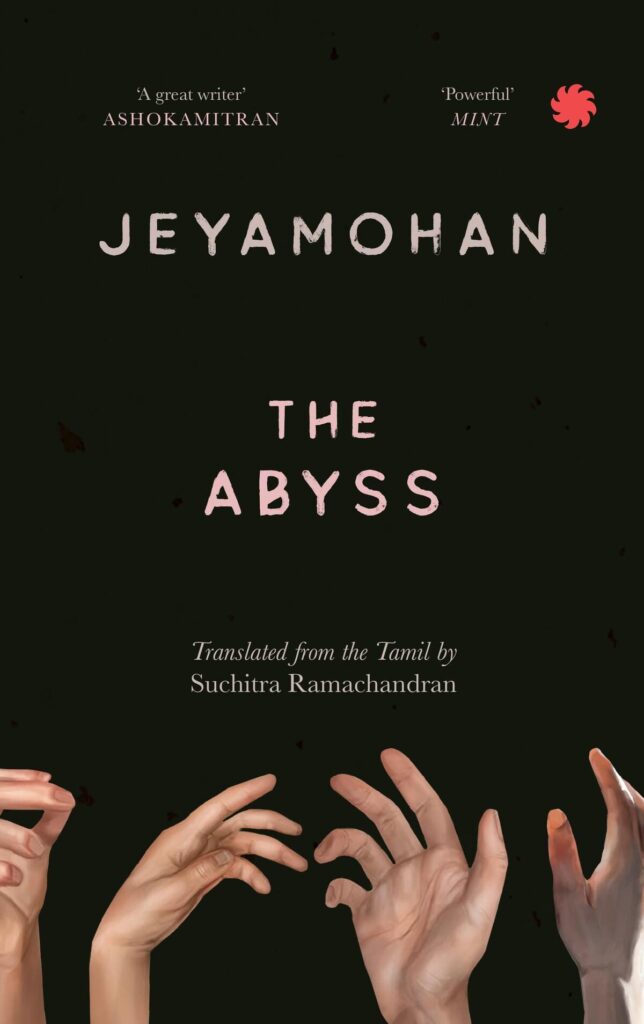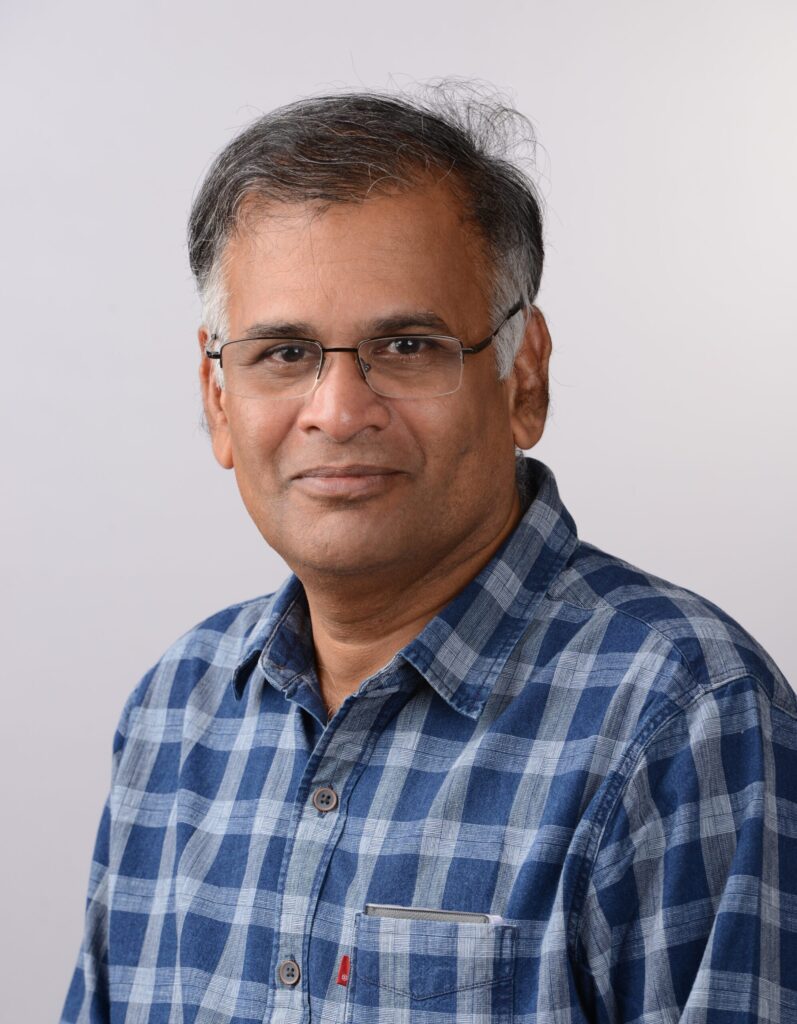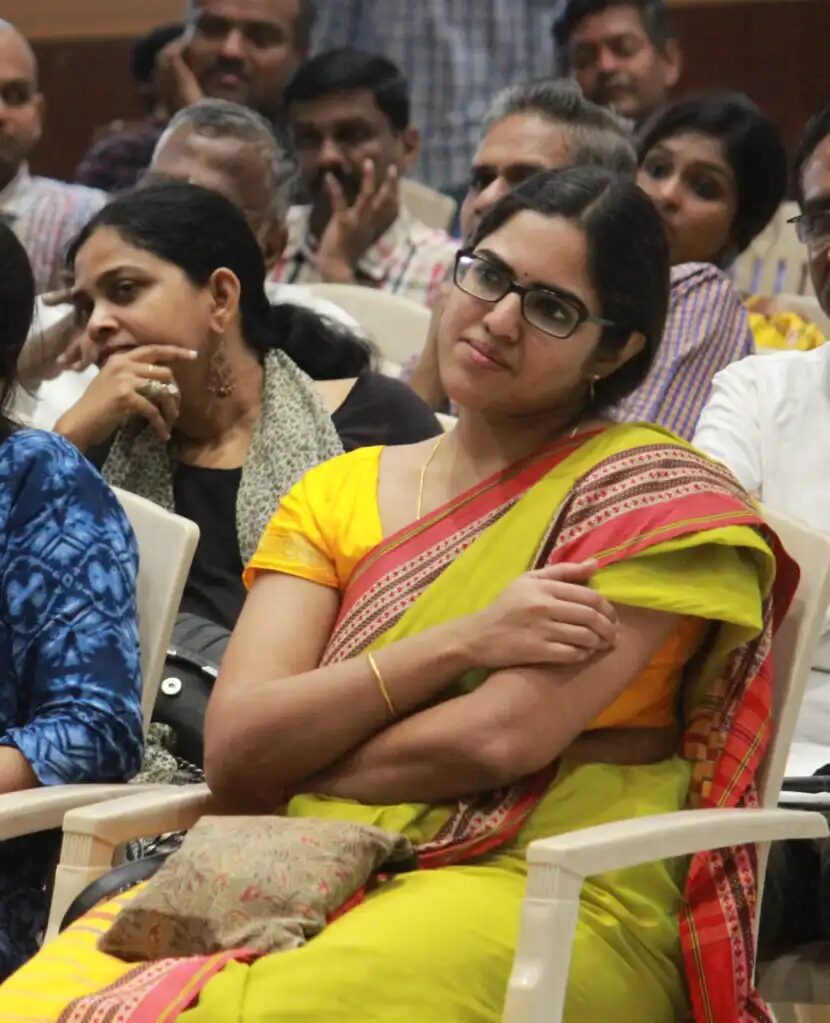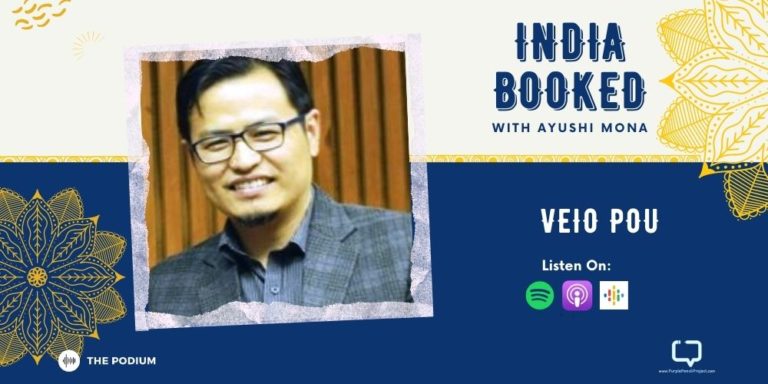Prakruti Maniar was in conversation with Jeyamohan and Suchitra Ramachandran, the author-translator duo behind the brilliant book, The Abyss.

Translated from Ezham Ulagam, The Abyss is as funny as it’s vulnerable, as simple as it’s extraordinary. One of Jeyamohan’s most acclaimed works, it fictionalises his personal experiences and was also the source behind the 2009 movie, Naan Kadavul.
Prakruti caught up with Jeyamohan and Suchitra Ramachandran at the Jaipur Literature Festival early this year.
Prakruti Maniar: As a writer of a language who is now being introduced to Anglophone readers and getting a wider readership, do you feel your place in the literary ecosystem is changing? Do you think that retrospectively, there was a divide between Tamil writing and stories and now, this English-speaking public and readership? Is there a loss, something in Tamil needed to quite get through to them? Is there a fear of misunderstanding, especially now when you’re being translated?
Jeyamohan: I have been writing in Tamil for more than 30 years. Now, only my works have been translated into English. I never took any interest in translating my works into English. Because I was writing for the Tamil reading public and focused on Tamil culture. Any good creative work is like that. It is regional, and sometimes it is sub-regional. Being translated into English is an entirely different thing. The work is now placed among the international audience.
Tamils are living in seven countries: Malaysia, Singapore, South Africa, European countries, and Sri Lanka. Now the work is available to them, too. Now, the reading audience is entirely different. I don’t know how much they are acquainted with our culture. Just translation is not sufficient. More discussions on creative work are needed. More connoisseurs are required to discuss the great works to make them understood by younger readers.
Tamils don’t have a group of connoisseurs who talk about Tamil culture and Tamil literature in English scenario. That’s the major problem we are facing today.
Jeyamohan
The Tamil reader already knows the cultural scenario of the creative work, but if a Gujarati reader reads The Abyss, he needs a good introduction to the work. We can easily read a Umberto Eco novel. The Italian background is well known to us. We can read an American work. We can read a Russian work, but we cannot read a Gujarati work. I’m understanding Gujarati culture through Ganesh Devy. I used to read Gujarati literature. A lot of Gujarati works are translated into Tamil. But I, too, need a connoisseur.

Tamils don’t have a group of connoisseurs who talk about Tamil culture and Tamil literature in English scenario. That’s the major problem we are facing today. So translating our work into English is good. We have been getting a little attention recently.
There’s nothing called international. The regional naturally becomes international. There is no international reader. Every reader is rooted in his own culture. He’s understanding other works through his culture. You can say you’re a Gujarati living in Ahmedabad who ultimately has no roots in Gujarat. How can you identify him? Is he an international reader? No. He’s a rootless reader. An American reader is not an international reader. On visiting America, you can understand that every American reader is rooted in his state. There is a Californian reader, a Colombian reader, not an American reader.
Similarly, we have roots. We have to understand it. We have to fix ourselves in that culture. That’s the way to understand a text.
Prakruti Maniar: You are the translator who is creating that bridge for the above discussion. What are your thoughts on the same?
Suchitra Ramachandran: The only thing I would like to add to that is text from a language is rooted in the culture. And that’s why we read it. We want to learn about people who are different from us. We want to learn about values and ideas that are different from us because there’s something called the universality of human values.
That’s also why we read literature. Because we want differences. We also want sameness. We want answers to the questions that beat in our own hearts. And despite, in fact, the more rooted a work is, the more it can go into fundamental questions and values. The canopies of the trees may be at a distance, but they’re all connected at the roots.
That’s also why we read literature. Because we want differences. We also want sameness. We want answers to the questions that beat in our own hearts.
Suchitra Ramachandran
So, at the root level, our questions seem very similar. When it comes to translation, it’s essential to get two things right. One is the specific difference that makes that culture unique, and you need to find solutions for that. That’s a craft-level problem. But you also need to make sure that the values the work speaks about palpate when you have the translation in front of you.
Prakruti Maniar: You’ve been writing for 30 years, including your blog. Writing tools have changed dramatically from the devices you use to the medium. For example, I cannot write on a laptop as authentically sometimes as I write when texting or when I’m writing longhand. How did you go into the seamless digital transition?
Jeyamohan: Tamil is the pioneer language in Indian languages, and it has transferred itself into the digital world. Tamil fonts are very simple, so we developed it very early. Most computer and software experts are from our land, so they create many text forms and software. We entered into the digital world in 1999.
Since we have readers in seven countries worldwide, the best way for them to read is on the net. It is easily accessible and cheap.
Jeyamohan
I have been writing using a computer, not my hands, for nearly twenty-four years. I cannot write by hand now. Before that, I wrote my major novels by hand, but I have been writing only on the computer for twenty-four years. Almost all major encyclopedias and dictionaries in Tamil are available online, which is very helpful for researching today. Since we have readers in seven countries worldwide, the best way for them to read is on the net. It is easily accessible and cheap.
I’m a writer who writes only for small-scale magazines. Five hundred copies. I was an editor at a small magazine, Solputhithu, and we published only 1500 copies, but it was costly. But the internet magazine publication is very cheap. For the past 15 years, I have been publishing a literary magazine on my website, jeyamohan.in.
It is published daily, and nearly one lakh people visit the site. Its total expense is three or four lakhs a year. So, it is very cheap. It is a newspaper, but it is very affordable. We are using that facility. I wrote Mahabharata on my site, and it was published every day. We had a set of seven editors for that text spread across the globe. One is in America, another in Chennai, and another in Delhi. They can edit their text every day because of this technical facility. Because of this significant technological advantage, I wrote the text in seven years, one chapter a day.
Google Books collection of nearly one lakh texts, in practice, is a vast library at your fingertips, which is excellent for research. The research for my first major novel, Vishnupuram, took 10 years, but within two years, I completed my research for Venmurasu because all the books are available in digital form, and that’s a huge advantage.
Prakruti Maniar: The Abyss is such a complex text to engage with. How was your journey with the translation of the book?
Suchitra Ramachandran: I started translating the book at the behest of a Tamil writer called A. Muttulingam. He explicitly asked if I would do it. I’d read the book for the first time a few years ago, and at that point, it was very hard-hitting, and I couldn’t get into the book. But when he asked me to read it a second time, I realized that it was a highly positive work, and there were aspects I could identify with, at the level of my own life.

The task at hand was to create an English for me, and I had to push the limits of language to get there.
Suchitra Ramachandran
That is when I realized I would be able to do this, and the next challenge was at the level of language, at the level of the craft. It was a great exercise because it’s a very polyphonic novel, and it’s written in dialect. It weaves multiple languages together and creates its own language. To render all those voices distinctly in English could be tricky because English is a great language that absorbs all kinds of influences, but it also flattens some nuances and homogenizes them. The task at hand was to create an English for me, and I had to push the limits of language to get there.
To align with your goals at the Purple Pencil Project, I’m also the co-founder of an organization called Mozhi, which centres on translation. It circles back to the point that we were talking about earlier. Sir said there’s not enough literary criticism. There’s not enough spotlight on literature in Indian languages. Each language has a vibrant literary tradition, but what’s spotlighted as Indian literature is mostly Indian writing in English, and to some extent, some books that make it to these places, these festivals.
If a non-Indian person wants to get a bird’s eye view of Indian literature, there’s no one place where you can find it today. With Mozhi, we are trying to create a new breed of literary translators and critics, translate the existing corpus of literary criticism, fiction, and whatever represents the literary tradition in various languages, and make one total for it.





















